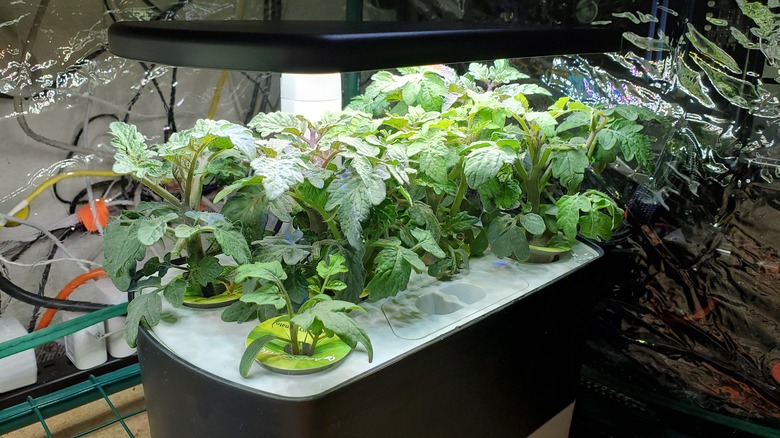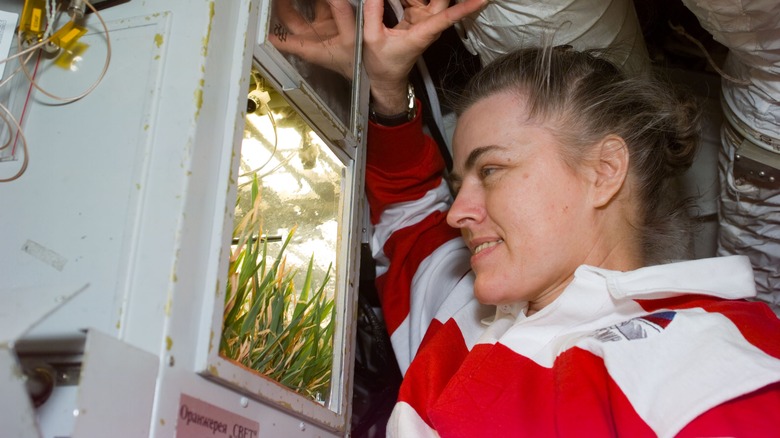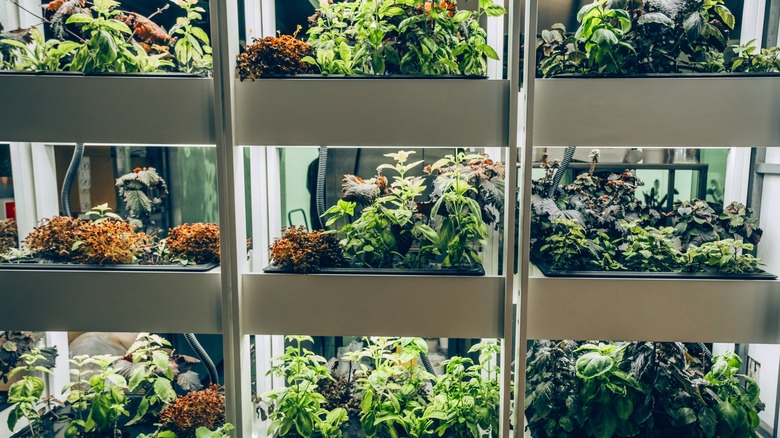How Do Plants Grow In Space?
Floating 250 miles above Earth, astronauts aboard the International Space Station aren't just orbiting, they're gardening. In a place with no up or down, no soil beneath their feet, and the vacuum of space pressing in from all sides, these intrepid researchers and scientists are growing everything from lettuce to chili peppers in glowing, climate-controlled chambers. Once a dream reserved for science fiction, space gardening is now very real, and surprisingly fruitful. But the big question underneath all of this futuristic plant tending is a seemingly simple one — why?
Why bother trying to make an Earth-bound activity successfully take root in orbit and beyond? It's more than just a quirky experiment; unlocking sustainable food production in this environment would enable astronauts to reduce their reliance on costly Earth shipments and provide them with a much-needed dietary and psychological boost. Beyond that, plants are excellent multitaskers. They produce oxygen (perhaps the most vital substance on a space station) and recycle waste and water.
Growing plants in space also lets us learn more about the plants themselves and how they adapt to the novel and extreme environment of space. The knowledge gained could help us cultivate plants on Earth in similarly extreme environments, a particularly valuable skill in the modern era of climate change. As humanity reaches further and further out into the solar system, these plants could help us enable long-duration space travel, supporting astronaut health and potentially fueling self-sufficient missions to Mars and beyond. And by studying how plants adapt to life in space, today's research may also inform tomorrow's efforts to terraform other planets, a sci-fi dream if there ever was one. Here, we examine the process of growing plants in space and explore why it's more challenging than simply planting a seed in a pot.
Growing plants in space
Growing plants on Earth is a matter of seeds, soil, water, and sunlight. But in space, each of those elements becomes a complex challenge. First, there's almost no gravity, which means water doesn't "flow" the way we're used to (although, if you thought astronauts experience zero gravity, you'd be dead wrong). Instead, water forms floating globules that cling to surfaces, making overwatering or underwatering a real concern. To manage this, astronauts use hydroponic systems or "plant pillows" filled with a clay-like substrate that holds moisture and nutrients in place while keeping roots anchored.
Lighting, too, needs to be reengineered. Plants evolved on Earth under natural sunlight and a single, 24-hour day-night cycle. On the International Space Station, those same plants are exposed to a sunrise-sunset cycle 16 times in 24 hours, while largely being out of reach of any sun rays. As such, researchers use custom LED arrays that emit specific wavelengths of light. Plants tend to reflect green light and absorb blue and red wavelengths, resulting in their growing chambers exuding a magenta purple hue. Astronauts onboard the International Space Station utilize the aptly named Vegetable Production System, affectionately known as Veggie, to experiment with vegetable growth in space.
Another chamber that ISS researchers use is the Advanced Plant Habitat (APH). APH is a closed system and is far more automated than Veggie. One hundred eighty sensors and cameras feed information to an Earth-based team that monitors their growth, moisture levels, and temperature. Then there's the Biological Research in Canisters (BRIC) facility, which astronauts use to study how the environment of space affects microorganisms, like yeast. LEDs were recently added to this facility to help study how algae and mosses produce their own food in space.
Why growing plants in space matters
The benefits of growing plants in space extend far beyond enjoying space-grown lettuce. For astronauts, it's all about the intersection of survival, sanity, and self-reliance. Fresh produce systems supplement their packaged diets with essential vitamins and minerals, and caring for plants provides crucial psychological support. There is a list of foods astronauts are banned from eating on the ISS, and it's quite restrictive, so opening that list up a bit would provide significant quality-of-life improvements. It would also help astronauts cope with living for extended periods in the isolated environment of a space capsule (which is one of the details most people don't know about life on the ISS). If you can reduce stress and improve morale on some of humanity's most important civilizational projects through tending gardens, which research has shown to be the case, that's well worth the effort.
But the implications stretch well beyond low-Earth orbit. Insights from space gardening research are already helping scientists improve farming on Earth. By learning how to grow food in extreme, closed-loop environments, NASA and partner agencies are uncovering ways to cultivate crops in drought-prone, poor-soil regions, a vital advantage in the face of climate change and rising food insecurity. NASA isn't the only player in the space gardening game, either. The European Space Agency and JAXA, Japan's space agency, are also working on advanced plant systems for long-duration missions.
Ultimately, learning to grow plants in space is about enabling the next giant leap, whether that's a self-sustaining moon base or a months-long voyage to Mars. Future missions will, whatever the context, need crops that can not only grow but thrive far from Earth. The success of these experiments will help establish humanity not as visitors in the cosmos, but as settlers.


